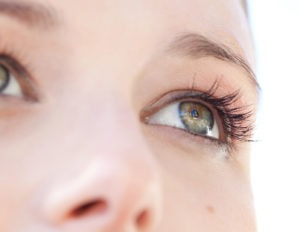 Eyelid surgery, also known as blepharoplasty, is a popular cosmetic procedure aimed at enhancing the appearance of the eyelids. Whether you’re seeking to eliminate puffiness, remove excess skin, or achieve a more youthful look, understanding the post-operative phase is crucial for a smooth recovery. As an oculoplastic surgeon, I have guided numerous patients through this journey and want to share key insights to ensure your recovery is as comfortable and effective as possible. Khan Eyelid and Facial Aesthetics, led by oculoplastic and reconstructive surgeon Dr. Tanya Khan, provides eyelid surgery to patients in Plano, Dallas, Austin, Texas, and surrounding locations.
Eyelid surgery, also known as blepharoplasty, is a popular cosmetic procedure aimed at enhancing the appearance of the eyelids. Whether you’re seeking to eliminate puffiness, remove excess skin, or achieve a more youthful look, understanding the post-operative phase is crucial for a smooth recovery. As an oculoplastic surgeon, I have guided numerous patients through this journey and want to share key insights to ensure your recovery is as comfortable and effective as possible. Khan Eyelid and Facial Aesthetics, led by oculoplastic and reconstructive surgeon Dr. Tanya Khan, provides eyelid surgery to patients in Plano, Dallas, Austin, Texas, and surrounding locations.
Immediate Post-Operative Care Instructions to Follow
After your eyelid surgery, the first few days are crucial for setting the stage for a successful recovery. Keeping your head elevated, even while sleeping, can significantly reduce swelling. Cold compresses applied intermittently can also alleviate discomfort and swelling during this period. It’s essential to avoid any form of strenuous activity, including heavy lifting, for at least a week to prevent complications. Additionally, keep your surgical area clean and follow any specific cleaning instructions provided by your oculoplastic surgeon. Avoid rubbing or touching your eyes, as this could introduce bacteria and lead to infection. Make sure to attend all scheduled follow-up appointments to monitor your progress and promptly report any unusual symptoms, such as increasing pain or excessive bleeding, to your surgeon. Taking these steps seriously will help ensure a smoother and more comfortable healing process.
Managing Swelling and Bruising in the First Week
Swelling and bruising are common after eyelid surgery and typically reach their peak around the third day post-op. To manage these side effects effectively, continue using cold compresses as advised. Your oculoplastic surgeon may also recommend gentle eyelid exercises to enhance circulation and reduce swelling. Elevating your head, even while resting or sleeping, can further aid in minimizing swelling. Be sure to follow any specific instructions from your surgeon regarding the use of cold compresses and exercises. It’s important to note that while some asymmetry in swelling is normal, significant discrepancies or prolonged swelling beyond a week should be evaluated by your surgeon. Keeping a close eye on your symptoms and adhering to the recommended care routine will support a smoother recovery.
Medications and Pain Management Techniques
Managing post-operative discomfort effectively can significantly enhance your recovery experience. Your oculoplastic surgeon will prescribe specific pain medications to help manage discomfort. It’s crucial to adhere strictly to the prescribed dosage and schedule to avoid complications. For mild pain, over-the-counter medications like acetaminophen can be helpful, but always consult your surgeon before taking any additional medications.
In addition to oral medications, your surgeon might suggest topical ointments or eye drops to keep the surgical area moist and reduce irritation. Using these as directed can prevent dryness and promote healing. If you experience any side effects from the prescribed medications, such as nausea or dizziness, inform your surgeon promptly for alternative options.
Applying cold compresses intermittently can also be a valuable pain management technique. This not only helps with swelling and bruising but can also numb the area, providing temporary relief from discomfort.
Remember, avoiding strenuous activities and keeping your head elevated, even while sleeping, can further minimize pain and swelling. It’s essential to communicate any persistent or severe pain to your surgeon, as this could indicate a complication that needs to be addressed. Adhering to these pain management strategies will aid in a smoother, more comfortable recovery process.
Recognizing Normal vs. Concerning Symptoms
Swelling and bruising are to be expected after eyelid surgery, peaking around the third day and gradually subsiding over the first week. Mild to moderate discomfort and some tenderness are also common. However, it’s essential to differentiate these normal post-op symptoms from those that may indicate complications. For instance, if you experience severe, unmanageable pain, it’s crucial to contact your oculoplastic surgeon immediately. Excessive swelling or any sudden change in vision is a red flag that should not be ignored. Other alarming signs include the presence of fever, chills, or any pus-like discharge from the surgical site, which may indicate an infection. Additionally, be mindful of any asymmetry in swelling or persistent swelling beyond a week, as these could signify underlying issues that require medical attention. Keeping an eye on your recovery and being vigilant about your symptoms will help ensure that any complications are addressed promptly.
Guidelines for Cleaning and Caring for Your Eyes
Keeping your eyes clean post-surgery is critical to avoid infections and promote healing. To clean your eyelids, use a clean, damp cloth and gently pat the area. Avoid any vigorous rubbing or scrubbing, as this can irritate the sensitive surgical site. Always ensure your hands are thoroughly washed before touching your eyes to minimize the risk of contamination.
Your oculoplastic surgeon will provide specific instructions on the type of cleaning solution to use, if necessary. Follow these instructions meticulously to maintain hygiene around the incision area. Typically, saline solution or a diluted baby shampoo mix is recommended for gentle cleaning.
Avoid using any non-prescribed products near your eyes, including facial cleansers or moisturizers, which could contain ingredients that may irritate the surgical site. Also, refrain from wearing makeup or contact lenses for the first two weeks post-op, as these can introduce bacteria and impede the healing process.
If your surgeon has prescribed ointments or eye drops, apply them as directed to keep the area moist and aid in recovery. Using a fresh cotton swab or clean fingertip, gently apply the medication without putting pressure on your eyelids. Proper eye care during this critical period can help ensure a smoother recovery and reduce the risk of complications.
What to Avoid During the Healing Process
During the initial healing phase following eyelid surgery, it’s essential to be mindful of activities and environments that could interfere with your recovery. Avoid engaging in strenuous physical activities such as heavy lifting, intense exercise, and bending over, as these can increase blood flow to the face and exacerbate swelling or bleeding. Steering clear of swimming pools, hot tubs, and saunas is also crucial, as these environments can introduce bacteria and increase the risk of infection.
Exposure to direct sunlight can adversely affect your healing process and lead to hyperpigmentation or scarring. If you need to go outside, wear a wide-brimmed hat and sunglasses to shield your eyes from UV rays. Additionally, avoid environments with excessive dust, smoke, or airborne particles, as these can irritate your sensitive eyes and surgical area.
It’s important to refrain from consuming alcohol and tobacco products during your recovery, as these substances can impair healing and increase the likelihood of complications. Alcohol can thin the blood and contribute to increased swelling and bruising, while smoking can restrict blood flow and delay tissue repair.
Be cautious with your sleeping position; lying flat on your back without elevating your head can cause unnecessary swelling. Opt for sleeping with your head elevated on a few pillows to promote better circulation and reduce swelling.
Lastly, avoid touching your eyes and be careful not to rub them, even if they feel itchy or irritated. This could dislodge stitches or introduce bacteria, leading to infection or delayed healing. Always follow the specific guidelines provided by your oculoplastic surgeon to ensure a smooth recovery and achieve the best possible outcome from your eyelid surgery.
Timeline for Follow-Up Visits and Long-Term Care
After eyelid surgery, follow-up visits play a crucial role in monitoring your healing and ensuring that everything is progressing as it should. Your first follow-up appointment will typically be scheduled within the first week post-op, during which your oculoplastic surgeon will check for any immediate concerns, remove stitches if necessary, and provide further guidance on care.
As you move forward, additional follow-up visits are usually scheduled at regular intervals—around two weeks, one month, and three months after your surgery. These appointments allow your surgeon to assess your recovery, address any lingering issues, and answer any questions you may have about the healing process or long-term care.
Long-term care is equally important in maintaining the results of your eyelid surgery. Protecting your eyes from sun exposure is vital, so always wear sunglasses with UV protection when you’re outside. This not only helps prevent hyperpigmentation but also minimizes the risk of scarring. Staying hydrated is also crucial for overall skin health and can aid in the healing process.
Your oculoplastic surgeon may provide additional recommendations tailored to your specific needs, such as using specialized skincare products to maintain the health and appearance of your eyelids. Consistently applying any prescribed ointments or eye drops can support long-term healing and comfort.
It’s important to keep an open line of communication with your surgeon throughout your recovery period. If you notice any unusual symptoms or have concerns about your progress, don’t hesitate to reach out for advice. Regular check-ins will help ensure that any potential complications are identified and addressed promptly.
By adhering to the follow-up schedule and implementing long-term care practices, you can optimize the results of your eyelid surgery and enjoy a more youthful, refreshed appearance for years to come. Remember, the journey doesn’t end after the initial recovery phase—maintaining good habits and regular check-ups are key to long-lasting success.
CONTACT Khan Eyelid and Facial Aesthetics AND OCULOPLASTIC & RECONSTRUCTIVE SURGEON DR. TANYA KHAN TODAY TO SCHEDULE AN APPOINTMENT
For more information about procedures and treatments at Khan Eyelid and Facial Aesthetics by Ophthalmic surgeon Dr. Tanya Khan. Click here to contact us.
Taking patients from in and around Dallas, Plano, Fort Worth, Grapevine, Garland, Mesquite, Carrollton, Irving, Frisco, Texas and more.









Schedule a Consultation: 972-EYE-LIDS (393-5437)